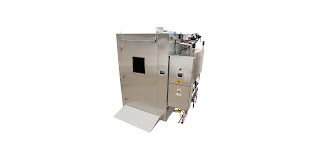Selecting a purification system which will deliver water of the correct quality and needed quantity is necessary for efficient laboratory operation. Surveying and capturing current consumption information, then projecting any future expansion, can serve as an input for determining the purified water production rate and daily volume requirements. Some types of purified water are best produced on demand, while others can be effectively collected and stored to accommodate high volume draw downs. Knowing whether the facility will need a large or more modestly sized unit will certainly contribute to a wise use of financial resources when procuring a system. There is, however, more to successful implementation than proper sizing.
The source water at each facility, usually from the municipal drinking water system, is comprised of many constituents, and can vary enough to impact the requirements for a properly configured system. Installing a water purification system with components selected, combined, and sized to purify the particular source water at your facility can deliver benefits over the life of the unit by reducing expenditures on consumables and maximizing system up-time.
The source water at each facility, usually from the municipal drinking water system, is comprised of many constituents, and can vary enough to impact the requirements for a properly configured system. Installing a water purification system with components selected, combined, and sized to purify the particular source water at your facility can deliver benefits over the life of the unit by reducing expenditures on consumables and maximizing system up-time.
The start of the process should include a detailed analysis of the source water. Water purification is a subtractive process, relying on the system's ability to remove various constituents of the source water. That task is best accomplished with thorough knowledge of the level and extent of the constituents.
What we commonly refer to as "water", of course, is far from pure by laboratory standards. Elga, a global manufacturer of water purification equipment and systems for laboratory point of use and centralized distribution, developed an illustrative infographic depicting aspects of laboratory grade water. It serves as a useful refresher for the experienced technician and an educational tool for the novice. The infographic is provided below, with all the credit going to Elga for its production.
Efficient and reliable production of lab grade water presents a number of challenges. Share your requirements with lab water experts, combining your own experience and knowledge with their product application expertise to develop an effective solution.






